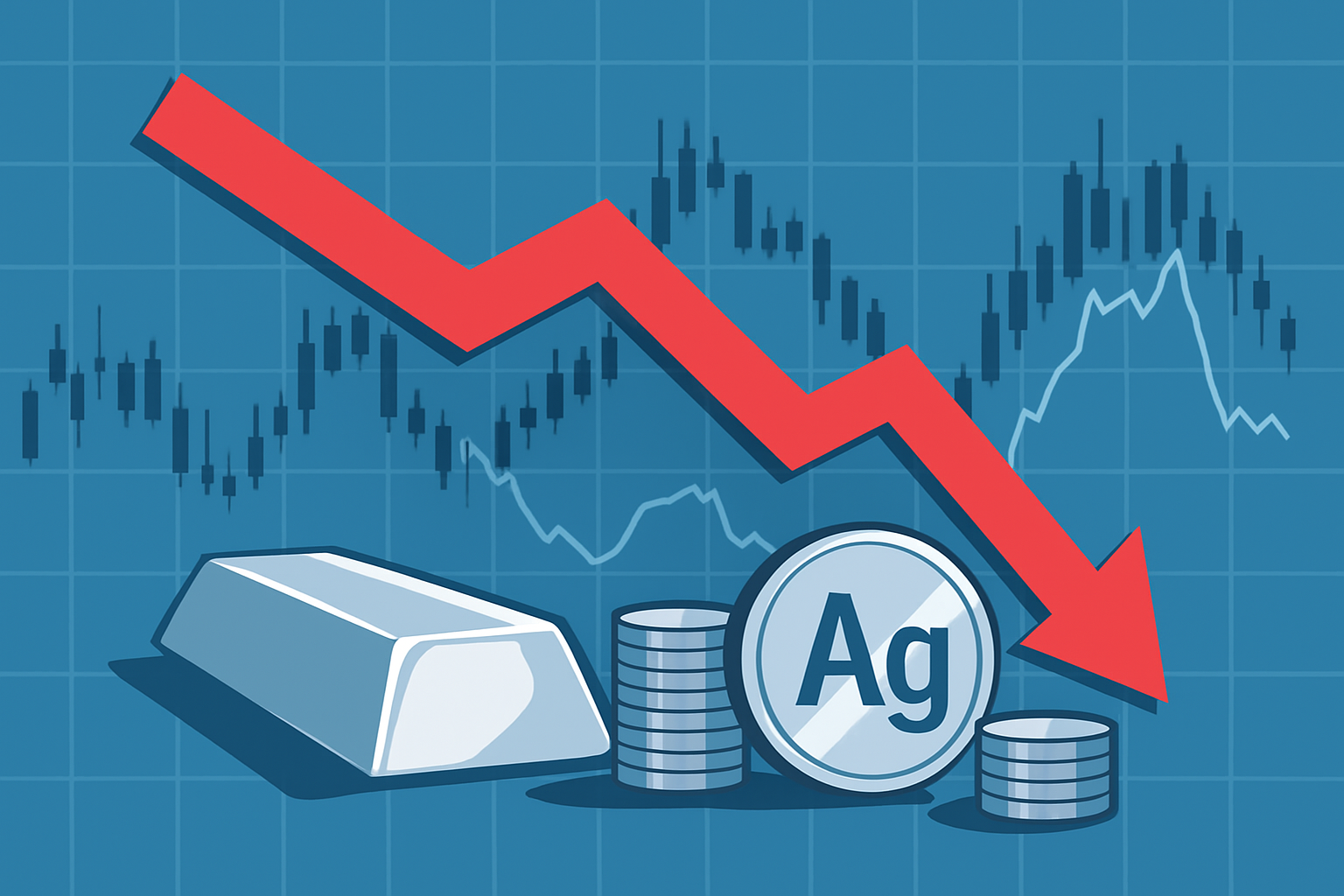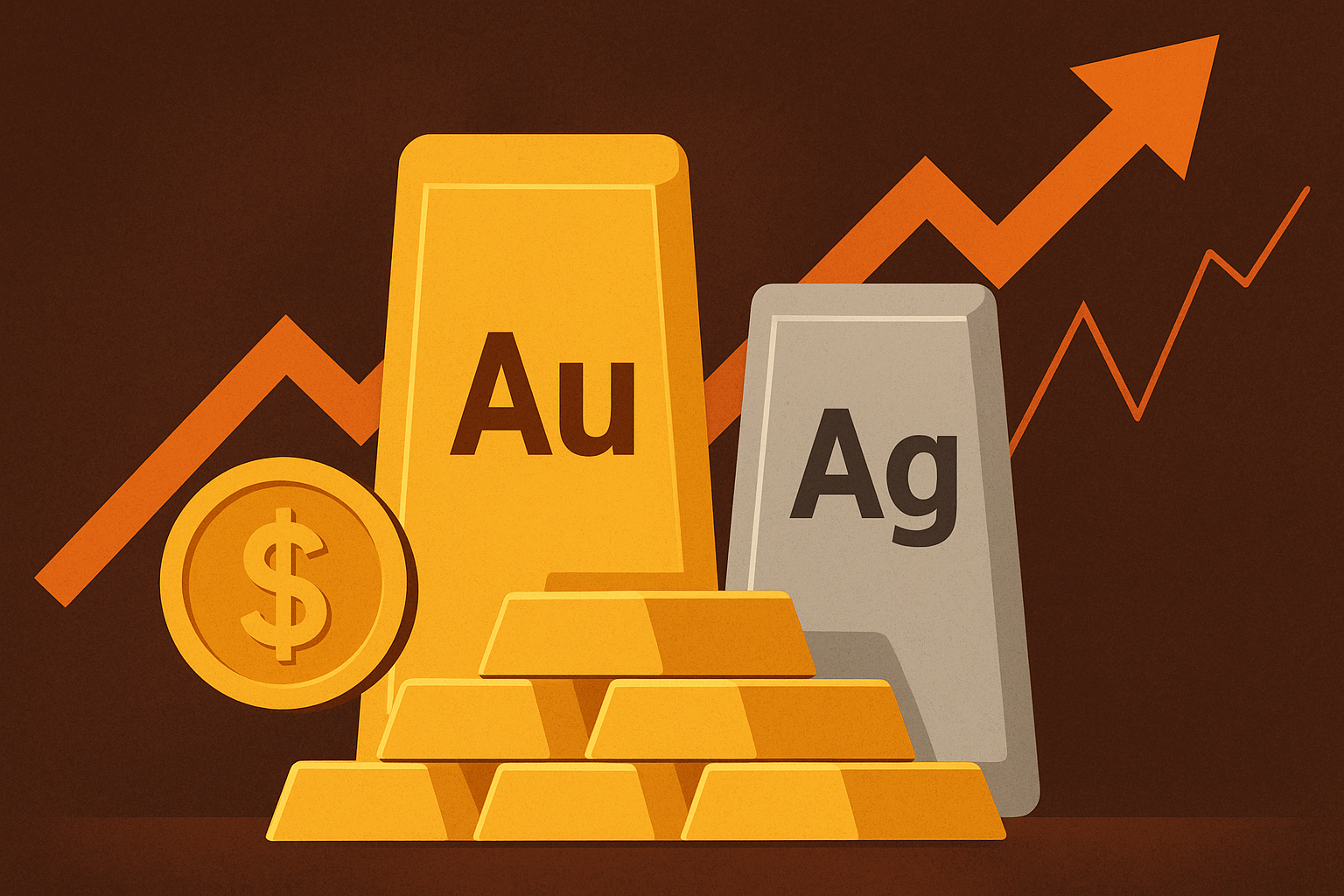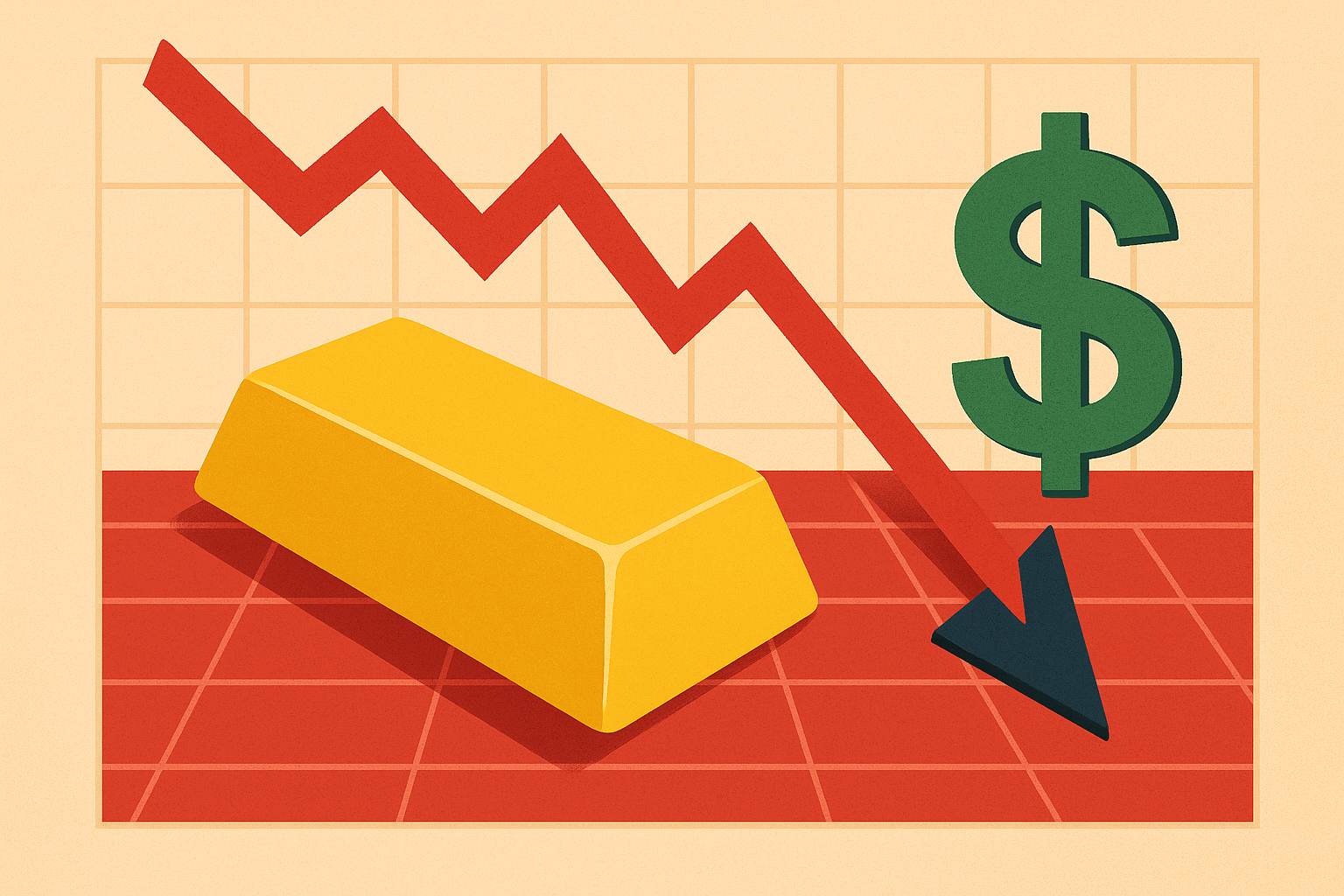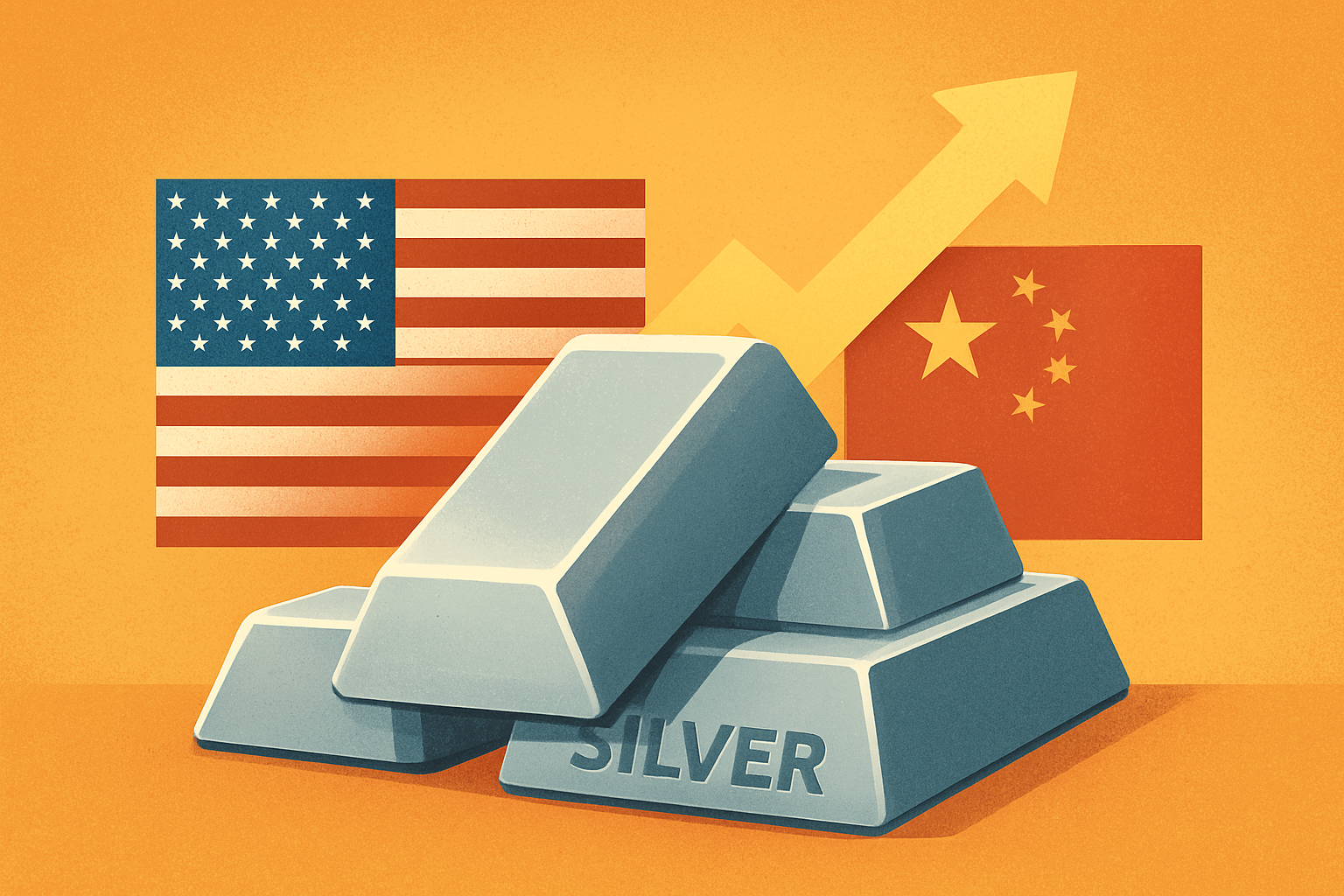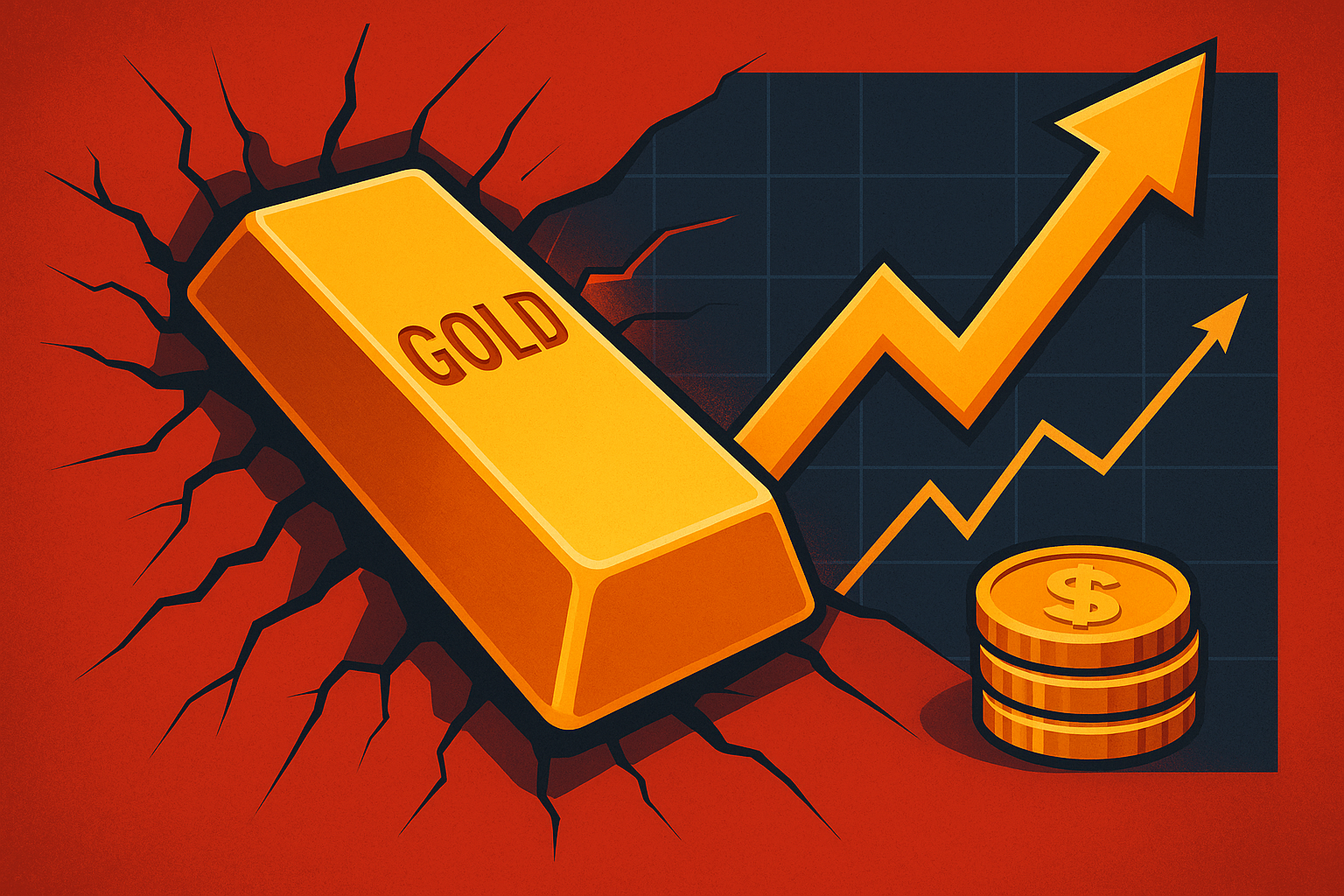After weeks of relentless momentum that pushed silver to record highs above US $54 per ounce, the precious metal has finally cooled — but investors are asking whether this is the end of the rally or merely a healthy reset. Spot silver fell over 7–8%, settling near US $48.30/oz as profit-taking swept through commodity markets and a stronger U.S. dollar weighed on sentiment.
According to The Economic Times and Trading Economics, this is the sharpest one-week decline for silver in over a year, coinciding with renewed speculation that the Federal Reserve could delay interest rate cuts due to stubborn inflation pressures. Meanwhile, Investopedia notes that gold also recorded its steepest single-day drop in over a decade — underscoring how quickly momentum-driven trades can reverse in today’s macro-sensitive environment.
Yet, beneath the volatility, the structural silver story remains firmly intact — and some analysts see this as a chance to accumulate before the next leg higher.
The Silver Rally Meets Its First Major Test
Silver’s recent price spike was driven by a powerful combination of industrial demand, supply constraints, and investor enthusiasm for hard assets amid geopolitical uncertainty.
The metal’s dual identity — as both an industrial input and a monetary hedge — has made it a standout performer in 2025. Industrial use, particularly in solar panels, electric vehicles, and electronics, continues to expand at a rapid pace. The Silver Institute projects global demand to reach 1.3 billion ounces this year, setting another record after 2024’s 1.2 billion.
However, with speculative positioning on COMEX futures near all-time highs, markets were due for a correction. The recent pullback was triggered by a mix of factors:
- Profit-taking after prices broke technical resistance.
- Rising Treasury yields, which strengthened the U.S. dollar.
- Reduced safe-haven demand, as geopolitical fears temporarily eased.
Still, Trading Economics reports that global silver inventories remain historically tight, and physical premiums in Asia and Europe suggest real-world demand is outpacing available supply.
Why This Matters for Investors
Despite the near-term correction, analysts caution against dismissing silver’s longer-term bull case.
Unlike gold, silver’s demand is increasingly industrial, accounting for over 60% of total consumption in 2025 — up from 50% a decade ago. The transition to renewable energy and electrification continues to underpin that demand, with silver playing a critical role in photovoltaic cells, conductive components, and 5G technology.
According to The Economic Times, the recent price drop may be “a temporary recalibration before new highs,” as production growth remains sluggish. Global mine supply, estimated by Metals Focus at just 830 million ounces in 2025, continues to lag behind consumption. This persistent supply deficit — now entering its third consecutive year — supports a fundamentally bullish backdrop.
Moreover, the cost base for miners has risen sharply due to energy and labor inflation, meaning that lower silver prices could pressure smaller producers and delay new supply coming online — a dynamic that often fuels medium-term price rebounds.
Future Trends to Watch
1. The U.S. Dollar and Fed Policy
A stronger dollar is currently silver’s biggest headwind. Should the Federal Reserve signal confidence in cutting rates later this year, silver could quickly regain upward momentum.
2. Industrial Demand Resilience
The solar industry’s expansion — expected to absorb over 190 million ounces of silver this year — remains a key driver. Any acceleration in renewable installations could tighten markets further.
3. Investor Flows and ETFs
Global silver ETF holdings have stabilized after months of outflows. Renewed inflows, especially into North American and European funds, could provide fresh fuel for the next leg of the rally.
4. Mining Margins and New Projects
Exploration-stage silver miners may benefit from renewed investor attention if silver consolidates above $45/oz. Keep an eye on developers with scalable, low-cost assets in stable jurisdictions.
Key Investment Insight
The recent correction appears less like a reversal and more like a technical reset after a parabolic run. For long-term investors, this could be a tactical entry point — especially if industrial fundamentals remain strong.
Short-term traders should monitor U.S. dollar strength, inflation readings, and ETF inflows, while long-term investors may focus on exposure through silver producers and diversified precious-metal ETFs.
As Investopedia notes, the 2025 silver rally shares striking similarities with 2020’s pandemic-era surge — characterized by a brief correction before renewed strength driven by fiscal stimulus and industrial demand recovery.
Silver’s volatility is a feature, not a flaw. The metal has historically rewarded investors who understand its cyclical nature and structural importance. If history rhymes, the recent drop could set the stage for a powerful second act in this year’s silver story.
Stay ahead of the markets. Follow explorationstocks.com for daily insights, actionable analysis, and the latest developments shaping commodities, critical minerals, and energy metals investing.

